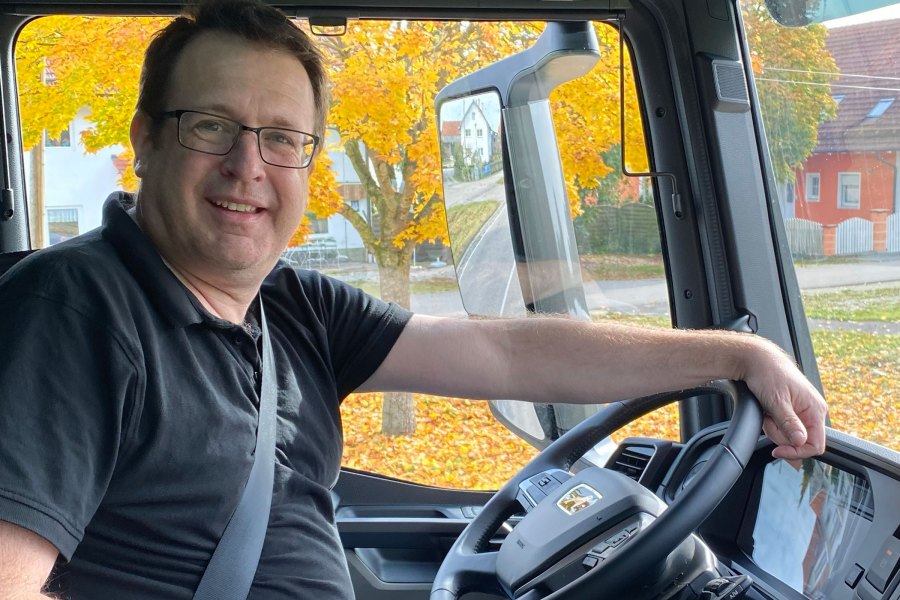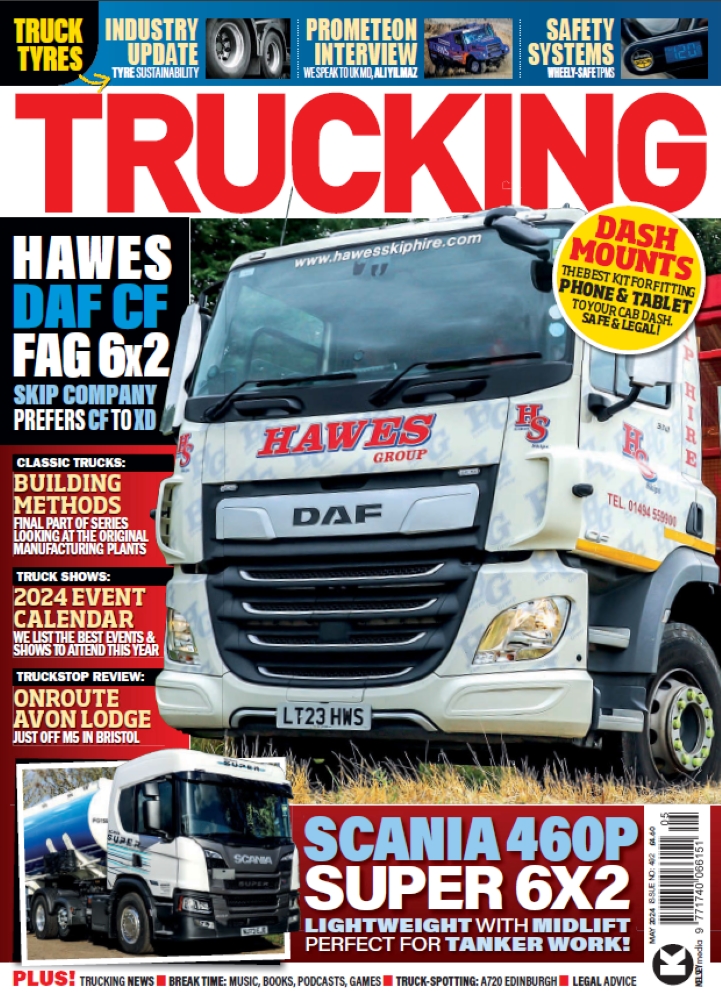Whenever I go out on a test drive, the manufacturer whose vehicle it is gives me a bit of training on the gadgets and buttons. Its representative talks me through how to get the best out of the truck and use its many features, be it a digital dash, digital mirrors, cruise control or whatever.
On most occasions, they accompany me on the test drive and talk me through these features ‘in action’ so I can drive the truck in the best way, both safely and efficiently.
Drivers that passed their test in back in the 1980s or 1990s did so in a vehicle that is nothing like a brand new, all mod cons DAF or Volvo. These new lorries are designed differently and are quite different to drive. Yes, the basics of turning the wheel to avoid kerbs, lampposts and bollards are pretty much the same, but other than that, they are miles more advanced.
There’s no gear change, and there is adaptive cruise control and also a heck of a lot of lights, buttons – some on the dash, some on the steering wheels, others in the door – and messages that also pop up on the dash. Many have touchscreens and app-based facilities. Even the radios are more complicated – although much better!
So while an experienced driver can jump in the latest DAF XG with digital mirrors and what have you and drive it fairly competently and relatively safely, if they haven’t had a vehicle handover from the dealer, they won’t get the best out of it.
For a start, there will be features they won’t even know exist. And if drivers don’t know about functions, they can’t use or understand them when they automatically come into force.
However, most manufacturers offer new owners an in-depth handover – typically half a day where they not only talk through the features but also show how drivers can find out what is happening and why.
That’s fine for small feet, which, say, puts a new type of vehicle on the road for the first time, for example, a new MAN with Optiview. The handover is vital to the driver so they know how to use the system, what the lines on the display screens mean and what the differences are compared with conventional wing mirrors, especially on key manoeuvres like reversing.
But what about the big firms, who take delivery of 100 new DAF XFs with DVS and expect any of their drivers to be able to drive them competently? Can they justifiably train every one of their thousands of drivers on the new system?
I ask this because not long ago, a friend was moaning about DVS on the new 23-plate DAF XF he’d just been given. He didn’t like it, especially the DVS. I said to give it time, and he’d get used to it, and when he did, I doubt he’d want to go back to old mirrors. He was what you’d politely call an ‘old hand’ who’d been on the road for decades but was not keen both on the DVS or the other gizmos on the truck.
But I think he was so reluctant to embrace the new technology because he’d had no training or handover on how to properly use it and get the best out of the new truck. He’d jumped from a fairly basic CF into a new ‘New Gen’ XF. And without any instructions, he was a bit flummoxed by the DVS. And that was no surprise. You can’t expect drivers, especially the older guys, to take such radically different equipment if thrown in at the deep end with no training whatsoever.
He said: “I had zero training on either the truck or the cams. I have no idea what all the controls on the steering wheel do, and I’ve managed to change the dash and bring the radio on without trying whilst turning the wheel! I have no idea how to set up the DVS or what the red and yellow lines are for.”
I won’t name him, nor the company he drives for – though it has hundreds of trucks – and there lies the problem: big companies often find it hard to schedule driver training. And that should not be the case.
But gone are the days when you could drive any vehicle – these days, you need to be shown where buttons and features are. It’s a false economy not to give drivers a decent vehicle handover or training on a new type of truck. Educate them, and they will use the features that will save fuel and reduce the risk of accidents – and that, surely, has to be a good thing for everyone concerned – owner, driver and the public.
For more Industry Comment and Thought Leadership from the Haulage and Logistics Industry, visit the Trucking Magazine website or subscribe to Trucking Magazine here.






